
The gnatcatchers are a family of small passerine birds called Polioptilidae. The 22 species occur in North and South America. Most species of this mainly tropical and subtropical group are resident, but the blue-grey gnatcatcher of the United States and southern Canada migrates south in winter. They are close relatives of the wrens.

The blue-gray gnatcatcher is a very small gnatcatcher native to North America.

The Iquitos gnatcatcher is a bird in the family Polioptilidae. It was first described in 2005. It is known only from the Allpahuayo-Mishana National Reserve, west of Iquitos, Peru.

The California gnatcatcher is a small 10.8 cm (4.3 in) long insectivorous bird which frequents dense coastal sage scrub growth. This species was recently split from the similar black-tailed gnatcatcher of the Sonoran and Chihuahuan deserts. This bird is often solitary, but joins with other birds in winter flocks.

The black-tailed gnatcatcher is a small, insectivorous bird which ranges throughout the Sonoran and Chihuahuan Deserts of the southwestern United States and northern Mexico. It is nonmigratory and found in arid desert areas year-round.
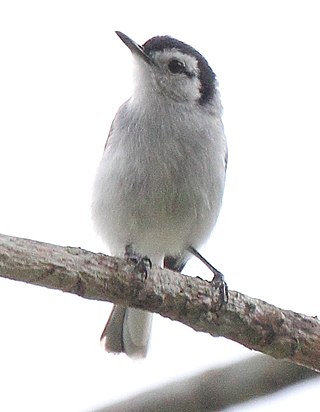
The tropical gnatcatcher is a small active insectivorous songbird, which is a resident species throughout a large part of northern South America. It was formerly considered as conspecific with the white-browed gnatcatcher and the Marañón gnatcatcher.

The black-crowned sparrow-lark is a species of lark in the family Alaudidae. It is found across northern Africa from Mauritania through the Middle East to north-western India. Its natural habitat is dry savanna.
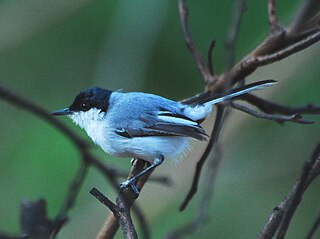
The white-lored gnatcatcher is a species of bird in the family Polioptilidae. It is found in Costa Rica, El Salvador, Guatemala, Honduras, Mexico, and Nicaragua.

Polioptila is a genus of small insectivorous birds in the family Polioptilidae. They are found in North and South America.
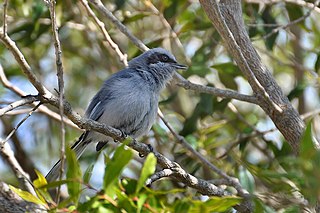
The masked gnatcatcher is a small songbird in the family Polioptilidae. It is found in Argentina, Bolivia, Brazil, Paraguay, and Uruguay.
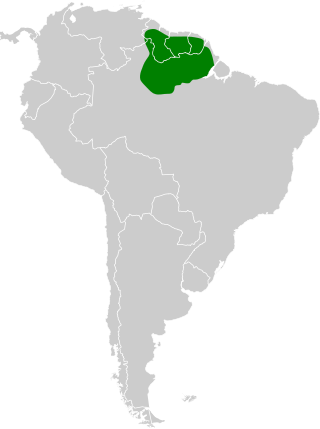
The Guianan gnatcatcher is a species of bird in the family Polioptilidae. It is found in Brazil, French Guiana, Guyana, Suriname, and Venezuela.

The creamy-bellied gnatcatcher is a species of bird in the family Polioptilidae. It is found in Argentina, Brazil, and Paraguay.
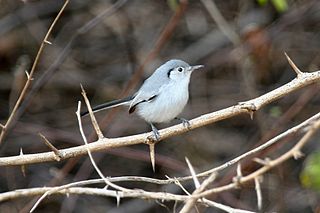
The Cuban gnatcatcher is a species of bird in the family Polioptilidae, the gnatcatchers. It is endemic to Cuba.

The slate-throated gnatcatcher is a species of bird in the family Polioptilidae. It is found in Colombia, Ecuador, and Panama.

The Sinaloa wren is a species of bird in the family Troglodytidae. It is endemic to Mexico, with almost annual sightings in the United States, in Arizona.

The Rio Negro gnatcatcher is a species of bird in the family Polioptilidae. It is endemic to Brazil.

The Para gnatcatcher or Klages's gnatcatcher, is a species of bird in the family Polioptilidae. It is endemic to Brazil.

The Inambari gnatcatcher is a species of bird in the family Polioptilidae. It is endemic to Brazil.

The Yucatan gnatcatcher is a species of bird in the family Polioptilidae. It is endemic to the Yucatán Peninsula in Mexico.

The coastal California gnatcatcher is a small non-migratory songbird. The coastal California gnatcatcher is the northernmost subspecies of the California gnatcatcher. It lives in and around coastal sage scrub. This songbird has black, gray, and white feathers, and eats mainly insects. It often lives alone but joins with other birds in winter groups. Its call sounds like a kitten meowing, a rising and falling zeeeeer, zeeeeer.




















